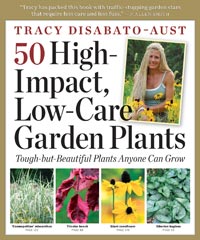[Update: April 2011] In the spring of 2011, herbaceous plants were added to this garden. Here is a partial plant list and some updated images from the garden. Enjoy!
[portfolio_slideshow include=”951,952,953,954,955,956,957,958″]
Dicentra s. ‘Gold Heart’, Anemone ‘September Charm’, Spigelia marilandica, Helleborus ‘Pink Parachute’ , Polygonatum odoratum ‘Variegatum’, Aquilegia alpina, Ascepias tuberosa, Papaver o.’Beauty of Livermore’, Crocosmia ‘Lucifer’, Canna ‘Pretoria’ Geranium ‘Rozanne’, Lilium henryi, Hakonechloa m. ‘All Gold’, Aster ‘Raydon’s Favorite’, Dahlia ‘Winsome’, Zinnia ‘Benary Giant Orange’, Lobelia cardinalis ‘Fried Green Tomatoes’ , Papaver rhoeos
DESIGN CONSIDERATIONS:
- Organize space clearly and creatively
- Especially important in enclosed small gardens: Connect architecture of the house to the garden (Style)
- Provide strong structural outline – extending the walls of the house to the garden with either living or nonliving boundaries for privacy and intimacy.
- Utilize vertical space for vines and /or espalier. Trellis can be attached and a cutout or mirror(s) can hint at distant or not-so-distant spaces.
- Select plants appropriate to the period or style of the home. They should have at least two seasons of interest if not more
- Cooler colors make an area appear larger but may not be desirable in all seasons.
- Planting smaller leaved plants in the background or finer textures increases the feeling of space.
- Change of levels and bricks placed on their narrow sides also create greater depth.
RECTOR RESIDENCE, GERMAN VILLAGE, OHIO
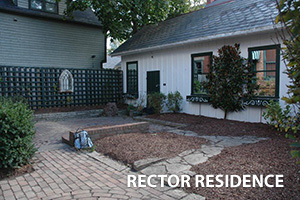 OVERVIEW: Beautiful historic home built in 1895 in the charming German Village district of Columbus, Ohio. Client is an enthusiastic gardener but the overall design of the garden needed an update from the existing 20 year old plan. Key elements include: A keen sense of place. Heirloom, native, and fragrant, plants many which were available from local nurseries during the period in which the house was built. Mirrors placed in garage windows and gothic art piece reflect the space and increase its apparent size substantially. Custom made wooden window boxes scrolled with the same engraving that is above some of the windows on the home. Custom made trellis for utilization of the vertical space on the fence and for hiding the air conditioning units. Espalier fruit and ornament trees. Beautiful neat, and uniform, living walls for intimacy. Old Oak whisky barrel installed as rain barrel.
OVERVIEW: Beautiful historic home built in 1895 in the charming German Village district of Columbus, Ohio. Client is an enthusiastic gardener but the overall design of the garden needed an update from the existing 20 year old plan. Key elements include: A keen sense of place. Heirloom, native, and fragrant, plants many which were available from local nurseries during the period in which the house was built. Mirrors placed in garage windows and gothic art piece reflect the space and increase its apparent size substantially. Custom made wooden window boxes scrolled with the same engraving that is above some of the windows on the home. Custom made trellis for utilization of the vertical space on the fence and for hiding the air conditioning units. Espalier fruit and ornament trees. Beautiful neat, and uniform, living walls for intimacy. Old Oak whisky barrel installed as rain barrel.
SITE EVALUATION: Small enclosed garden approximately 30’ x 25’ including a 14’ x 14’ brick patio in the center. English ivy had taken over the garden and had developed into a mature deeply rooted woody plant that required the entire season to eradicate before establishing the new garden. Most of the other existing plants were overgrown and dated. A soil test indicated 8% organic matter content – which is a good star – however the ph was high, even for this area, at 7.6. Beds were amended with 4” of a blend of different organic matter (See The Well-Tended Perennial Garden). Sun patterns performed by the client in the peak of the growing season revealed that most of the bed spaces receive only 1-4 hours of sun except for a couple raised beds near the house which receive about 7 hours of sun. The garden is in a protected USDA hardiness Zone 5/6. One of the main challenges was installing the large plants and irrigation into such a small space.
STYLE: The house and neighborhood dictate a European/German influenced historic style. German gardens are typically neat, and orderly with an emphasis on fruit and vegetable culture along with a love for flowers. Houses are frequently adorned with ornamentals and there is an interest in new plant material along with a high degree of craftsmanship in stone, wood, and iron.
FUNCTION: Gardens are primarily for the personal enjoyment of the clients. However due to their highly visible location along a sidewalk leading to a large park they are viewed and enjoyed by many of the residents of the community.
COLOR, TEXTURE & FORM: In the spring the colors will be cooler and softer including pinks and whites but the client’s passion for bright saturated hot reds and oranges will dictate the palette for summer and autumn. Variegated foliage and yellow foliage will also be part of the colorful picture.
PEAK SEASON OF INTEREST: Spring, summer and autumn would be the seasons the garden would be enjoyed.
PLANT SELECTION: Colleague and friend Denise Adams author of Restoring American Gardens (Timber Press) was contacted for suggestions on plants which would fit the period and location. She provided a plant list for the Columbus Nursery which was located three quarters of a mile south of town on High Street (German Village) and was established in 1855. I used the list to help drive the plant selection. Native and fragrance were also part of the criteria for many of the plants.
WOODY PLANT LIST (more woodies and all the herbaceous to come in spring)
3-Calycanthus floridus ‘Athens’ Athens Sweetshrub
12-Carpinus betulus ‘Fastigiata’ Upright European Hornbeam (used as living wall)
1-Clematis terniflora Sweet Autumn Clematis
3-Daphne x burkwoodii ‘Carol Mackie’ Carol Mackie Daphne
5-Deutzia gracillis ‘Nikko’ Nikko Deutzia
6-Hydrangea paniculata ‘Limelight’ Limelight Hydrangea
2-Lonicera periclymenum ‘Graham Thomas’ Graham Thomas Honeysuckle
1-Magnolia grandiflora ‘Bracken’s Brown Beauty’ (espalier) Bracken’s Brown Beauty Southern Magnolia
1-Magnolia x ‘Jane’ Jane Magnolia
1-Malus ‘Gala’ Gala Apple (espalier)
1-Passiflora incarnata Passion Flower
1-Pyrus ‘Kieffer’ Kieffer Pear (espalier)
3-Rhododendron viscosum Swamp Azalea
3-Schizophragma hydrangeoides ‘Moonlight’ Moonlight Japanese Hydrangea Vine
3-Symphoricarpus x doorenbosii ‘Marleen’ Marleen Snowberry
ENJOY THE GALLERY OF BEFORE, DURING, AND AFTER OF PHASE I OF THE INSTALLATION!!
[portfolio_slideshow]
DESIGN BY DISABATO-AUST/INSTALLATION AND CONSTRUTION BY HIDDEN CREEK LANDSCAPING INC. PLEASE CONTACT US FOR DETAILS ABOUT OUR WORK.
[email protected] For more design lessons from Tracy see: The Well-Designed Mixed Garden.
Copyright 2010 Tracy DiSabato-Aust
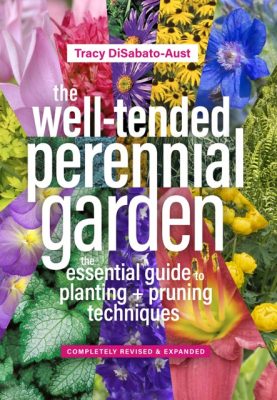 I was recently interviewed by Timber Press about the new and completely revised edition of The Well-Tended Perennial Garden. Visit the Timber Press blog for the full interview!
I was recently interviewed by Timber Press about the new and completely revised edition of The Well-Tended Perennial Garden. Visit the Timber Press blog for the full interview!
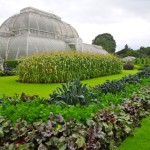

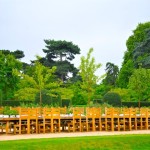
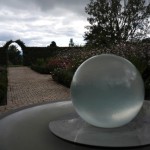



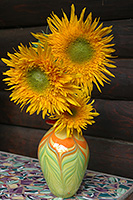 New to the plant scene at Hiddenhaven are exciting specialty cut flowers. This past season we grew 5,000 amazing sunflowers in our field. Ten different cultivars were tested. Two plantings occurred with the first on May 10 and the second on June 1, 2010. A light application of chicken manure was spread prior to planting and llama manure was placed between a few of the rows after planting. Seeds were hand planted 6 inches apart for non-branching varieties and 12 inches apart for the branching types. Harvesting started July 6th and continued until August 20th. These beauties touched so many lives bringing smiles and joy to all. Due to popular demand I’ll be growing them again this year but have upped the numbers to 6,000 and 12 different varieties—this could easily get out of hand!! Order you seeds now to bring some sunshine into your gardens.
New to the plant scene at Hiddenhaven are exciting specialty cut flowers. This past season we grew 5,000 amazing sunflowers in our field. Ten different cultivars were tested. Two plantings occurred with the first on May 10 and the second on June 1, 2010. A light application of chicken manure was spread prior to planting and llama manure was placed between a few of the rows after planting. Seeds were hand planted 6 inches apart for non-branching varieties and 12 inches apart for the branching types. Harvesting started July 6th and continued until August 20th. These beauties touched so many lives bringing smiles and joy to all. Due to popular demand I’ll be growing them again this year but have upped the numbers to 6,000 and 12 different varieties—this could easily get out of hand!! Order you seeds now to bring some sunshine into your gardens. OVERVIEW: Beautiful historic home built in 1895 in the charming German Village district of Columbus, Ohio. Client is an enthusiastic gardener but the overall design of the garden needed an update from the existing 20 year old plan. Key elements include: A keen sense of place. Heirloom, native, and fragrant, plants many which were available from local nurseries during the period in which the house was built. Mirrors placed in garage windows and gothic art piece reflect the space and increase its apparent size substantially. Custom made wooden window boxes scrolled with the same engraving that is above some of the windows on the home. Custom made trellis for utilization of the vertical space on the fence and for hiding the air conditioning units. Espalier fruit and ornament trees. Beautiful neat, and uniform, living walls for intimacy. Old Oak whisky barrel installed as rain barrel.
OVERVIEW: Beautiful historic home built in 1895 in the charming German Village district of Columbus, Ohio. Client is an enthusiastic gardener but the overall design of the garden needed an update from the existing 20 year old plan. Key elements include: A keen sense of place. Heirloom, native, and fragrant, plants many which were available from local nurseries during the period in which the house was built. Mirrors placed in garage windows and gothic art piece reflect the space and increase its apparent size substantially. Custom made wooden window boxes scrolled with the same engraving that is above some of the windows on the home. Custom made trellis for utilization of the vertical space on the fence and for hiding the air conditioning units. Espalier fruit and ornament trees. Beautiful neat, and uniform, living walls for intimacy. Old Oak whisky barrel installed as rain barrel.
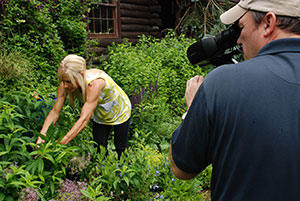
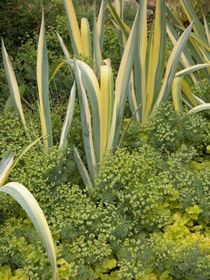
 As plant nerds we all go through different plant fetishes. I’ve been through numerous “species obsessions” including the Geraniums, the lilies, and the Dianthus just to name a few. And currently I’m into Carex in a big way. But I’ve been in
As plant nerds we all go through different plant fetishes. I’ve been through numerous “species obsessions” including the Geraniums, the lilies, and the Dianthus just to name a few. And currently I’m into Carex in a big way. But I’ve been in  love with poppies (both annual and perennial) for about as long as I can remember. I even have a history of “smuggling” poppy seeds into the USA in my “unmentionables”J when returning from a year and a half of work/study abroad 28 years ago. The best germination success of annual species, for the home gardener in colder climates, seems to occur when the seeds are sown directly in February or March when the ground is free of snow. Also to ensure success I’ve learned to order fairly large quantities of seeds—one small
love with poppies (both annual and perennial) for about as long as I can remember. I even have a history of “smuggling” poppy seeds into the USA in my “unmentionables”J when returning from a year and a half of work/study abroad 28 years ago. The best germination success of annual species, for the home gardener in colder climates, seems to occur when the seeds are sown directly in February or March when the ground is free of snow. Also to ensure success I’ve learned to order fairly large quantities of seeds—one small  packet just doesn’t cut it. I’m talking about getting ¼ lb. or even 1 lb. of seeds when available. I sow seeds of California poppy (Eschscholzia californica), Red Corn Poppy or Flanders Poppy (Papaver rhoeas), and Bread or Opium Poppy (Papaver somniferum) about the gardens in any available space. It is harder to find large quantities of opium poppy so it may require numerous smaller packets for best effect. A great source for seeds of poppies is Wildseed Farms www.wildseedfarms.com. Also remember to allow poppies to go to seed once you’ve got them established in the garden. You can even cut off the mature seed pods and spread them about in the desired location. Good luck with these gorgeous plants.
packet just doesn’t cut it. I’m talking about getting ¼ lb. or even 1 lb. of seeds when available. I sow seeds of California poppy (Eschscholzia californica), Red Corn Poppy or Flanders Poppy (Papaver rhoeas), and Bread or Opium Poppy (Papaver somniferum) about the gardens in any available space. It is harder to find large quantities of opium poppy so it may require numerous smaller packets for best effect. A great source for seeds of poppies is Wildseed Farms www.wildseedfarms.com. Also remember to allow poppies to go to seed once you’ve got them established in the garden. You can even cut off the mature seed pods and spread them about in the desired location. Good luck with these gorgeous plants.
